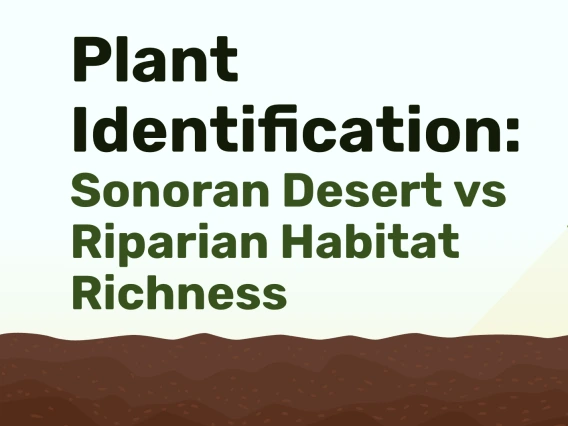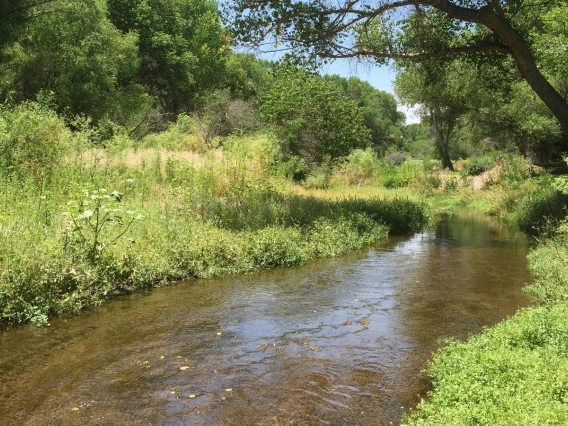In this lab, students will utilize scientific methods to measure and examine the total number of plants for two different environmental conditions (Desert vs. Riparian Habitat). This lab will consist of two parts. The first part will require students to collect data using a transect line (50m), where students will count the total number of different species of plants in set quadrants (1m2) located every 5 meters along a transect line, at their local school. The second part will examine pre-collected transect data conducted along the Santa Cruz River. This lab will examine how species richness varies across these two respective habitats.
- Objectives
- SWBAT understand the significance of a phenomenon is dependent on the scale, proportion, and quantity at which it occurs.
- SWBAT understand how patterns in the natural world can be observed, used to describe phenomena, and used as evidence.
- SWBAT describe how different ecosystems support diverse life forms.
- Grades: 10 to 12
- Time: 2 days
- Author: A Brauner
Arizona Standards Engaged
- The significance of a phenomenon is dependent on the scale, proportion, and quantity at which it occurs.
- Patterns in the natural and human designed world can be observed, used to describe phenomena, and used as evidence.
- Different patterns may be observed at each of the scales at which a system is studied and can provide evidence for causality in explanations of phenomena.
- Mathematical representations are needed to identify some patterns.
- Empirical evidence is needed to identify patterns.

Lesson Plan

Teaching Slides


